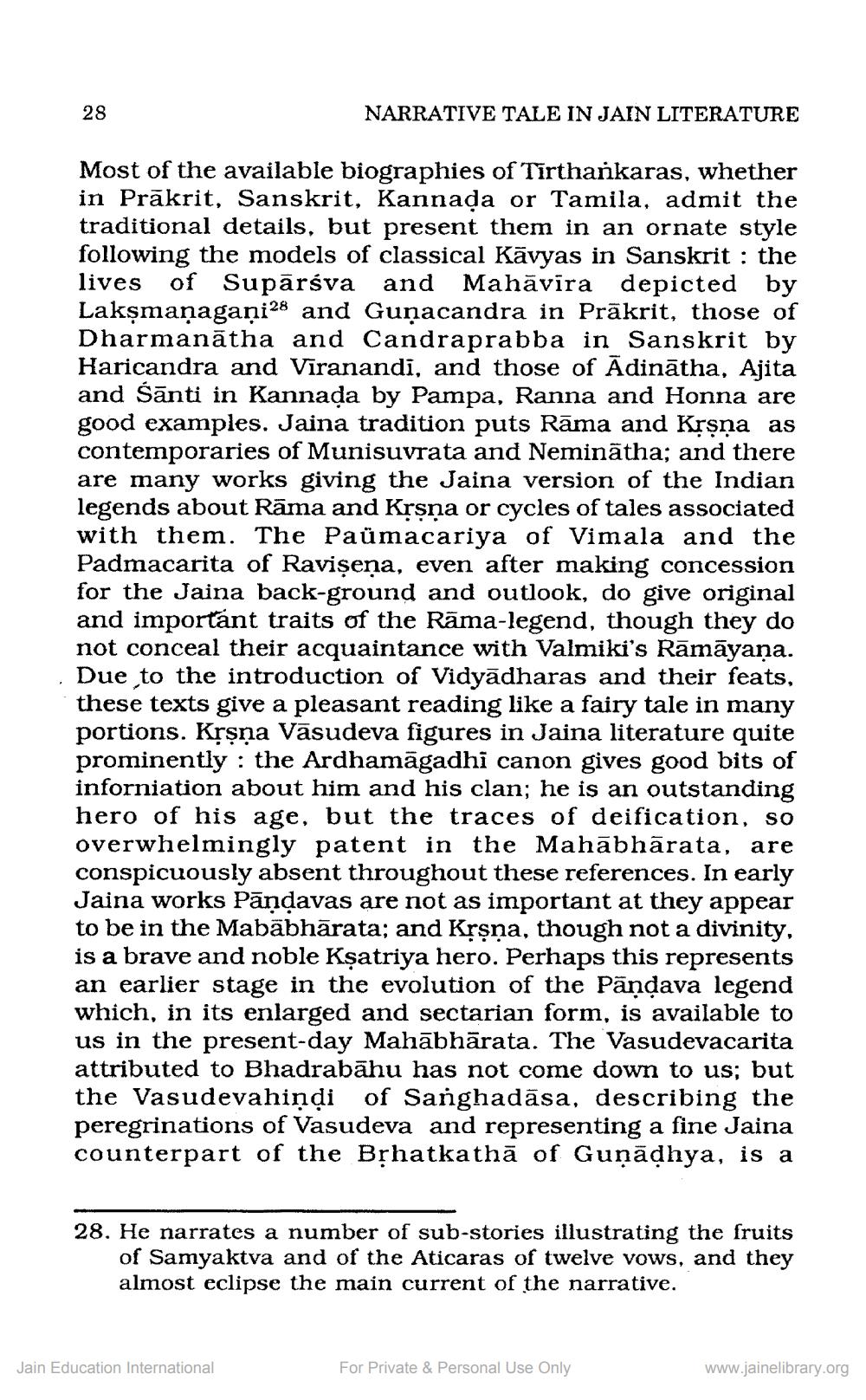________________
28
NARRATIVE TALE IN JAIN LITERATURE
Most of the available biographies of Tīrthankaras, whether in Prākrit, Sanskrit, Kannada or Tamila, admit the traditional details, but present them in an ornate style following the models of classical Kāvyas in Sanskrit : the lives of Supārsva and Mahāvīra depicted by Laksmanagani28 and Gunacandra in Prākrit, those of Dharmanātha and Candraprabba in Sanskrit by Haricandra and Viranandi, and those of Adinātha, Ajita and Sānti in Kannada by Pampa, Ranna and Honna are good examples. Jaina tradition puts Rāma and Krsna as contemporaries of Munisuvrata and Neminātha; and there are many works giving the Jaina version of the Indian legends about Rāma and Krsna or cycles of tales associated with them. The Paümacariya of Vimala and the Padmacarita of Ravişeņa, even after making concession for the Jaina back-ground and outlook, do give original and important traits of the Rāma-legend, though they do not conceal their acquaintance with Valmiki's Rāmāyana. Due to the introduction of Vidyādharas and their feats, these texts give a pleasant reading like a fairy tale in many portions. Krşņa Vāsudeva figures in Jaina literature quite prominently : the Ardhamāgadhi canon gives good bits of inforniation about him and his clan; he is an outstanding hero of his age, but the traces of deification, so overwhelmingly patent in the Mahābhārata, are conspicuously absent throughout these references. In early Jaina works Pāndavas are not as important at they appear to be in the Mabābhārata; and Krsna, though not a divinity, is a brave and noble Ksatriya hero. Perhaps this represents an earlier stage in the evolution of the Pāndava legend which, in its enlarged and sectarian form, is available to us in the present-day Mahābhārata. The Vasudevacarita attributed to Bhadrabāhu has not come down to us; but the Vasudevahiņdi of Sanghadāsa, describing the peregrinations of Vasudeva and representing a fine Jaina counterpart of the Bșhatkathā of Guņādhya, is a
28. He narrates a number of sub-stories illustrating the fruits
of Samyaktva and of the Aticaras of twelve vows, and they almost eclipse the main current of the narrative.
Jain Education International
For Private & Personal Use Only
www.jainelibrary.org




